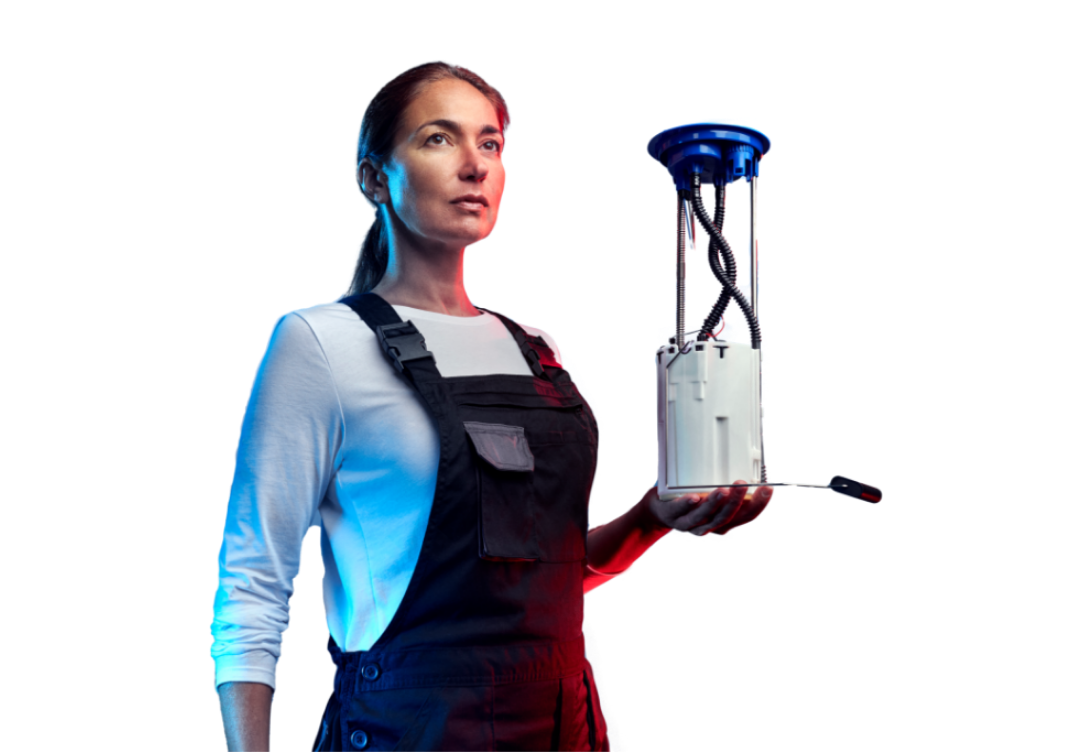Resource Highlights
To make sure your vehicle is ready to drive during and after a lockdown, we put together a list of common issues with idle vehicles paired with recommendations on how to maintain a parked car.
Due to the coronavirus pandemic, people around the world are following lockdown guidelines to stay at home or shelter in place. With non-essential businesses closed and remote work on the rise, people are driving less and their vehicles are sitting longer. While vehicle maintenance during a pandemic might be the last thing on your mind, leaving a car parked for an extended time can affect both its safety and reliability.
To make sure your vehicle is ready to drive during and after a lockdown, we put together a list of common issues with idle vehicles paired with recommendations on how to maintain a parked car.
Fill up your gas tank before leaving it parked
Considering your gas cap is working properly, a vehicle’s fuel system does a good job of preventing evaporation. However, leaving a fuel tank near empty increases the chances of fuel oxidation and water contamination which can degrade the gasoline in the tank.
Oxidation occurs in gasoline after prolonged exposure to oxygen causes chemical reactions to form impurities that can clog up and damage fuel lines, fuel injectors, and filters. Water contamination comes from condensation in the gas tank and fuel lines from heat cycling. This moisture buildup can cause internal rusting that contaminates the fuel system with particulates, which can cause catastrophic damage to fuel injectors and fuel pumps.
We recommend keeping a full tank of gas if your car sits for extended periods of time. By leaving minimal room above the fuel for oxygen or moisture buildup to reduce the chances of both oxidation and water contamination. If you plan on storing the car for longer than 6 months, consider adding a fuel stabilizer to your gas tank to prevent bad gas from damaging your fuel system.
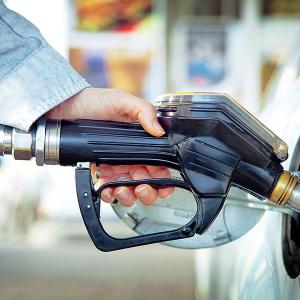
Keep your battery charged by driving regularly
Car batteries lose their charge when sitting idle. Starting a car and leaving it running for a half-hour will give it back some charge. However, the better thing you can do for your battery is to drive the car and allow the alternator to recharge it completely. If your battery struggles when turning the key, try cleaning the battery terminal connections to help improve performance.
We recommend replacing a faulty battery. If a replacement is not an option and you know your battery has trouble holding a charge, consider using a trickle charger or battery tender to prevent a dead battery.
Note: a trickle charger is fine to leave on your vehicle’s battery for a few days but will overcharge it if you leave it connected for several weeks. A battery tender, however, can be left connected for long periods of time without cause damage to your vehicle’s battery.

Check the engine oil level even if you aren’t driving
Usually, an engine that consumes oil does so while it is running but oil occasionally the oil pan drain plug can drip. It’s always a good idea to check the oil level (and other fluid levels) before starting after the vehicle has been parked for several weeks.
Also, don’t assume that just because you’ve only put a few hundred miles on your vehicle that the engine oil doesn’t need to be changed after several months. Moisture from normal humidity collects inside your engine’s crankcase (where the oil is) whether you drive it or not. Most manufacturers advise changing the motor oil at least once a year even it the vehicle is not driven. Consult your vehicle’s owner’s manual for more details.

Regularly check your tire pressure
All tyres leak air over time due to osmosis (or permeation) which can add up over several weeks and leave your tyres underinflated. Parking a vehicle for several weeks with low tyre pressure increases the risk of developing flat spots where the weight of the vehicle pushes the tyre flat against the parked surface.
Symptoms of a flat spot are similar to an unbalanced wheel and are usually temporary as they often disappear once the tyres warm up after traveling at speed. In rare cases, and especially after extreme ambient temperature changes or very cold weather, flat spots can become permanent and the tyre will need to be replaced completely.
We recommend using a tyre pressure gauge to regularly check the pressure in pounds per square inch (PSI) and maintain tyre pressure at the manufacturer’s specifications to avoid flat spots. This inflation pressure specification is typically located on a sticker referred to as the “tyre placard” located inside the driver’s door opening.
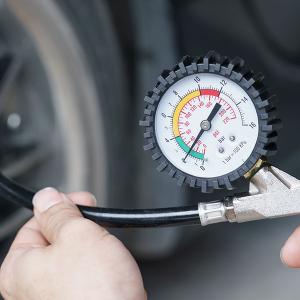
Avoid using the parking brake if possible
You may have noticed rust on your rotors already if you haven’t driven much in the past couple of days. Surface rust is normal and usually disappears after driving and the friction from braking.
However, if a vehicle is parked for a long time with the parking brake engaged, this rust can seize pads or shoes to the drum or the rotor. This may actually require a professional to disengage the braking system. The risk of corrosion is higher if the vehicle is older or is in a humid environment.
We recommend avoiding using the parking brake (or emergency brake) if possible. If you drive a manual, consider parking on a flat surface, leaving the parking brake off and in first gear or reverse instead.
If you must use the parking brake, return to the vehicle as much as possible to release the parking brake. Then, while applying the foot brake, let the car roll back slightly to reposition the brakes before reapplying the handbrake. This will help prevent any further sticking.
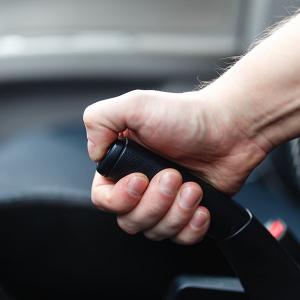
Keep the exterior clean to prevent rusting
Regularly washing your parked car and applying a coat of wax afterward will keep your paint safe from damage. This may not seem important now, but scratches in the paint leave the metal underneath exposed to the air and other elements that will cause the body to corrode or rust in the future. Direct sunlight can cause trim and interior upholstery to become sun-faded, and in cases of prolonged exposure, will break apart the plastic.
If you're keeping your car parked outside, we recommend a quality car cover to not only protect your paint but the interior and rubber trim as well. If you can’t find a cover for your vehicle or a shaded area to park under, keep the windshield wipers away from the glass whenever possible. This will help prevent the blade from drying out and a possible need for replacement.

And the interior clean to protect the HVAC system
Before leaving your car parked, make sure to clean the interior of any debris and leftover food that may mold or attract rodents and bugs. We recommend running the air conditioning periodically to help prevent the compressor plates from oxidizing and the hoses and expansion devices from drying out due to lack of use. Turning the air conditioning on to the highest setting and leave it running for 5 to 10 minutes also helps eliminate any bacteria that may have passed through the air filter.
Prior to returning your vehicle back to daily service, consider changing the cabin air filter if your vehicle is equipped with one. This filter (often located behind the glovebox) cleans the air entering your vehicle’s HVAC system. You might think of it as your heating / A/C system’s “face mask”. Consult your vehicle’s owner’s manual for the manufacturer’s recommended replacement interval.
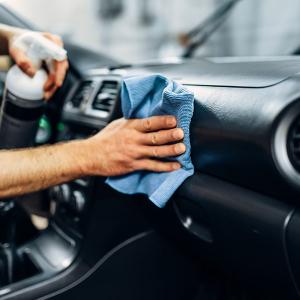
Maintain your vehicle by driving it
The best solution to maintaining your vehicle during the coronavirus pandemic is to simply drive it whenever possible. Starting your vehicle and letting it idle to operating temperature will circulate oil in the engine and ensure that the system is lubricated. But by driving for at least 20 minutes once every week, you can charge the battery, move the tires, use the A/C, and remove surface rust from the rotors.
Whether it’s to commute to an essential job, make a grocery store run, or take a trip once the lockdown is over, these preventive maintenance tips will help keep your vehicle safe and in running order. Stay safe!
SIGN UP
TO FIND OUT MORE
Fill out your details to hear more from our experts and get the latest updates from Delphi.

